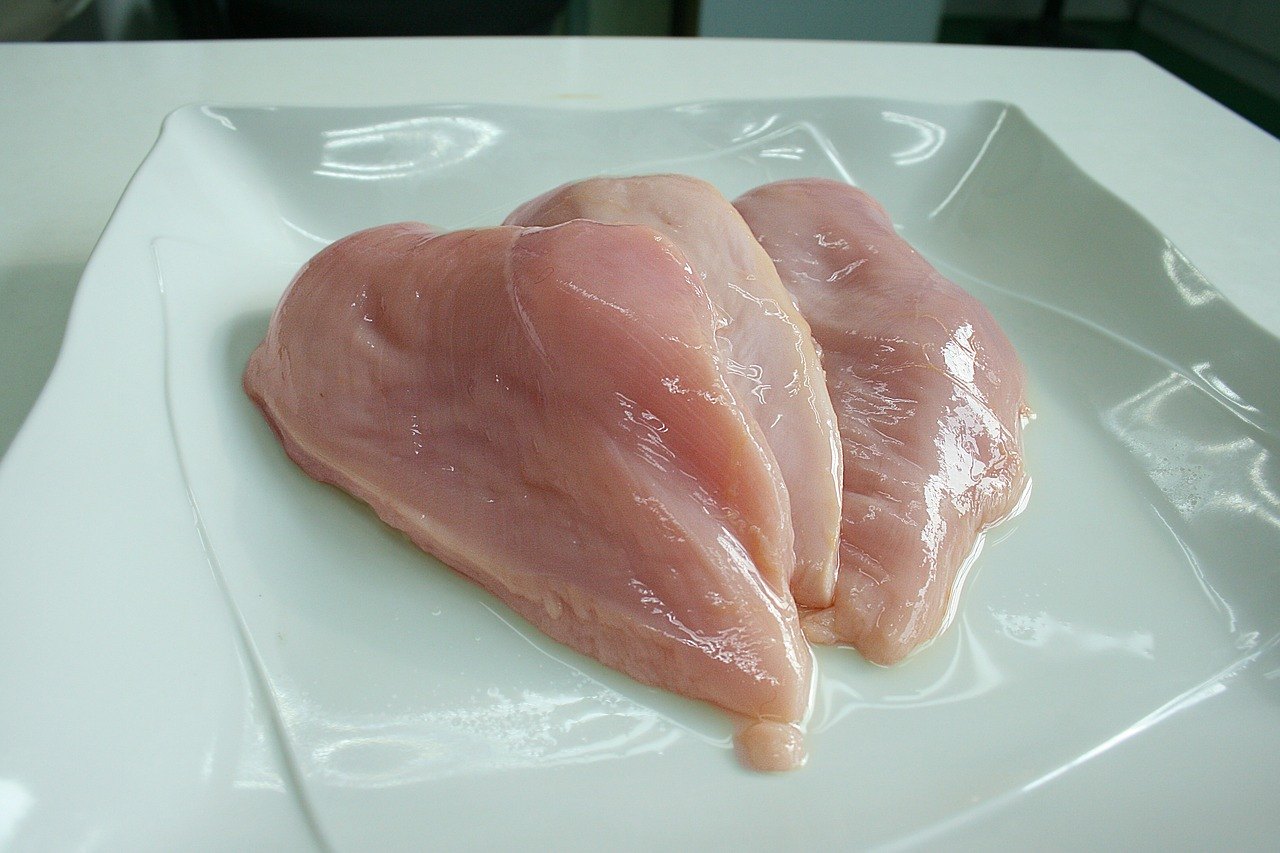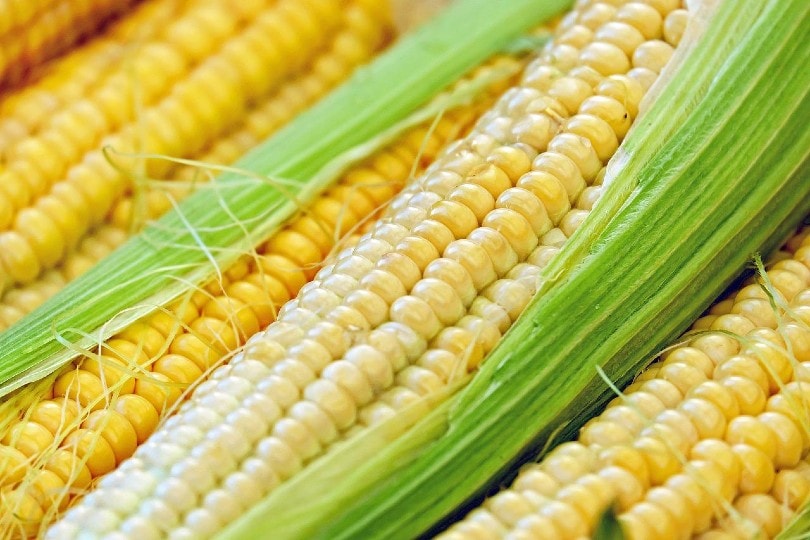
Food allergies are quite rare in cats, and just about 1% of cats have a food allergy.1 While they’re uncommon, food allergies can be extremely frustrating because they can be difficult to diagnose and can be very debilitating for cats if they’re untreated and not eating the right diet.
Food allergies can also develop at any age, and there aren’t any known relationships between allergies and a cat’s age, breed, or sex. So, a cat could potentially develop a food allergy as it ages.
Diagnosing a cat’s food allergy can be very challenging. Knowing the common culprits can help speed up the process of finding a safer diet for your cat.

The 6 Most Common Food Allergens for Cats
1. Beef

Beef is a fairly common ingredient in commercial cat food and is also a common food allergen for cats. Cats can be allergic to different cuts of beef and beef organs, and they can develop an allergic reaction to the enzymes or proteins found in beef.
Commercial cat food can also use beef fat and other animal fat for their linoleic acid.2 Linoleic acid and other fatty acids can improve skin and coat health, and cats need to eat foods containing these fatty acids because they can’t produce them on their own. Cats with beef allergies will have to resort to getting their essential fatty acid intake from other meat proteins or plant-based oils, like canola oil.
2. Fish

Contrary to popular belief, fish isn’t a natural part of a cat’s diet.3 Today’s domestic cat descended from African wildcats, so their natural diet consists of smaller land mammals. While cats may enjoy the flavor of fish, some may not be able to digest them properly and others can also develop allergies.
Having a fish allergy can be tricky because a lot of commercial cat food contains fish and fish oil. So, cats with a fish allergy most likely have to stick to a veterinary hypoallergenic diet.
3. Chicken

Chicken is another common ingredient in commercial cat food that can cause allergic reactions. Like beef, many cat food recipes contain all kinds of chicken products, including fat and organs.
Cats with a chicken allergy won’t necessarily be allergic to eggs. They also may not be allergic to other poultry, like duck or turkey. So, you can always try switching to a different poultry diet if you find that your cat can’t digest chicken very well or develops an allergy.
4. Wheat

Wheat allergies are much rarer than meat allergies, but they can still happen in cats. Cats can develop an allergic reaction to proteins found in wheat. Cats with wheat allergies often have to avoid dry cat food that uses wheat to add nutritional value and bind the kibble together.
It’s unclear as to whether or not cats can be diagnosed with celiac disease or gluten intolerance. So, while pet food companies may market gluten-free diets for cats, it may not be necessary for them, and you can avoid paying more for such “premium” cat food diets.
5. Corn

Corn is a carbohydrate that’s included in dry cat food. Some wet food may incorporate cornstarch as a thickener. While it’s a fairly common ingredient in commercial cat food, it’s rare for cats to have a corn allergy.
Corn contains a protein called zein, which can trigger an allergic reaction in some cats. However, because corn allergies are so rare, it’s very likely your cat is allergic to a different ingredient in the food, such as beef or chicken.
6. Dairy

While people may think that cats like drinking milk, cats often have a difficult time digesting it. Few cats can have a dairy allergy, but many are lactose intolerant. The difference between allergies and lactose intolerance is that allergies are an immune response while lactose intolerance is a digestive issue.
So, if your cat gets an upset stomach after consuming dairy, it’s most likely lactose intolerant. Skin irritation and inflammation can indicate a dairy allergy.

Signs of Food Allergies
Cats suffering from food allergies can display several different signs. A common sign of food allergies is skin issues. Cats can experience inflammation and itchiness. The irritation can cause them to over groom themselves as a means of alleviating the pain. Continuous scratching and licking can lead to hair loss, skin lesions, and infections.
A less common sign of food allergies is digestive issues. Cats can have gastrointestinal upset that triggers vomiting or diarrhea. They can have more frequent bowel movements and end up having an irritated rectum that causes them to scoot.

How To Avoid Food Allergies
The best way to avoid food allergies is to take your cat to your veterinarian for a diagnostic exam. This can take several months to diagnose the cause of food allergies accurately. Cats will typically have to go on a hypoallergenic or hydrolyzed diet for about 8 to 12 weeks. They can only eat this diet and must also refrain from eating treats and flavored medications.
If the cat doesn’t show any signs of allergies, it can be reintroduced to its original diet. If it has an allergic reaction, it’ll have to go back to eating the hypoallergenic diet. Once its condition stabilizes, you can introduce one ingredient at a time to determine which food is causing the allergic reactions.
Once you determine the food allergen, it’s important to thoroughly scan cat food ingredient lists to prevent your cat from eating the allergen. Avoid ambiguous ingredients, like animal by-product meals, because they can be unclear as to what kind of meats are included in them.
It’s also best to stick to limited ingredient diets to ensure your cat is eating a simple diet that doesn’t contain common food allergens. If your cat has a particularly severe food allergy, it may need to stick to a veterinary diet, which has a higher standard of health and safety protocols.

Summary
Knowing common food allergens can help you find a safe diet for your cat should it develop a food allergy. Cats will most likely be allergic to protein found in meat, and wheat and corn allergies are pretty rare.
If your cat starts to develop chronic skin issues, it’s possible that it’s experiencing an allergic reaction. The best way to help your cat is to work with your veterinarian to diagnose the cause and provide the proper treatment to alleviate the symptoms.
- You might also like: How to Stop Cats from Bringing Outdoor Allergens Home
Featured Image Credit: Caftor, Shutterstock






